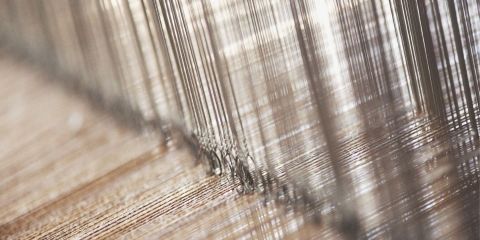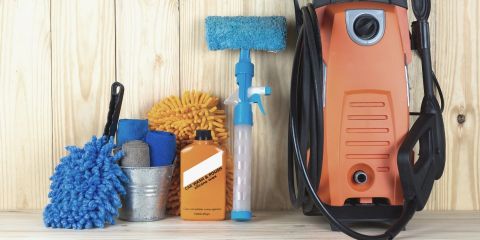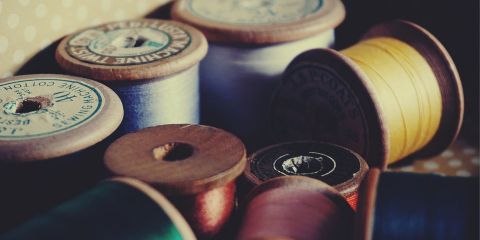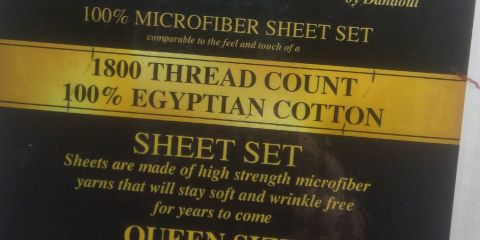Key Points
- Microfiber sheets are a decent cheaper alternative to natural fibers.
- Typically made with polyester, but also nylon.
- Fineness is measured in Denier with a value of less than 1.
- Quality of the Microfiber is measured in GSM, inspect product closer if only Thread Count is advertised.
- Microfiber sheets are not as breathable as cotton
- Not biodegradable and can have impacts on the environment
As anyone who has ever shopped around for kids bed sheets will be well aware, the homeware market is saturated with different types, all of which are marketed as being the most durable, soft, eco-friendly or luxurious. With so many options available, it can be difficult to know which sheets will be right for you or your child.
If you’re feeling a little disoriented by the 100s of sheets available for purchase, it may be tempting to opt for a simple cotton sheet. Whilst you may be fairly satisfied with the product, however, you risk missing out on some of the excellent benefits offered by newer kinds of material such as microfibre.
Microfibre sheets are very popular amongst consumers at the moment, thanks in part to their affordability and durability. They are also very easy to wash and are wrinkle-resistant.
They may not be as breathable as cotton sheets, however, so it is important to understand the pros and cons of every sheet type before going ahead and making a purchase.
Remember that achieving high-quality sleep on a regular basis plays a vital role in maintaining your mental and physical health. By spending time choosing the right kind of bedding for you and your family, you can ensure that everyone stays happy, healthy and comfortable all year round.
If you’re not familiar with the pros and cons of microfibre sheets, we’ve put together the following guide to help you make an informed purchase.
What are microfibre sheets?
Microfibre sheets are comprised of very thin fibres that are tightly woven together, a manufacturing process that makes the products very lightweight and comfortable. Typically, microfibre is produced using polyester, but it can also be made with other materials such as nylon, wood pulp, or certain types of polymer.

Due to the fact that microfibre sheets tend to be made from synthetic as opposed to natural materials, they are usually less susceptible to shrinkage or wrinkling compared to those made from cotton, linen or even nylon that can sometimes shrink in the dyer .
The tight weaving process also means that microfibre sheets are highly absorbent and tend not to shed many fibres. Unlike cotton sheets, therefore, they do not leave much lint behind, making them a good material for bed sheets.
Microfibre sheets come in a variety of thickness grades that cater to individual needs and tastes. These are measured according to a system known as ‘denier’ (den), which symbolises the fineness of a sheet.
Denier is a measuring unit that represents how many grams the fibre weighs per 9,000 metres of material . The higher the denier, the thicker the sheet. It should also be noted, however, that manufacturers may represent the fineness of a sheet using the more logical deci-tex (dtex) unit, which represents how many grams of fibre are present in 10,000 metres of material.
Most microfibre sheets have a denier of less than 1. To put this into context, the average deniers of silk, cotton, wool, and carpet are, respectively, 1, 1.5, 3, and 7.
Microfibre are most commonly used in cleaning products
Thanks to microfibre’s impressive ability to lift and retain grease, grime, dirt, and bacteria, microfibre products are becoming increasingly popular within the household cleaning market. Indeed, most microfibre cloths comprise both positively charged polyester fibres and negatively charged nylon fibres that effectively extract dirt from surfaces in the home. This can help homeowners to save money and protect the environment by mitigating the need for toxic cleaning chemicals.

How is the quality of microfibre sheets measured?
One quality measure of bed sheets traditionally uses a system known as thread count. Thread count indicates how many horizontal and vertical threads of fibre are in a square inch of material .

Do microfiber sheets have thread count?
Thread count is not the standard measurement when dealing with microfiber sheets.
Whilst the thread count of fabric may offer some indication of its quality, it is not a foolproof and there are a number of other factors to consider in discerning how well the sheet has been manufactured.
Indeed, thread count is a more accurate measure for materials such as cotton, whilst a more appropriate system for microfibre sheets is grams per square metre (gsm).
What is a good GSM for microfibre sheets?
The grammage of microfibre sheets broadly ranges between 55 gsm and 120 gsm. Usually, however, a commercially available microfibre sheet will fall between 90 - 110 gsm.
A general rule to follow when purchasing microfibre sheets is that the higher the gsm, the more durable and comfortable it will be. Consumers should exercise caution when purchasing sheets, however, as manufacturers sometimes use deceptive advertising tactics.
For example, they may state that a sheet has a thread count of 1,000-2,000 and fail to state the gsm. On closer inspection, you may find that the product product label indicates that it "has the feel of a 1,800 thread count cotton" sheet.

Always check the product label to see exactly what it is that you are buying.
Do microfibre sheets pill?
Pilling is what happens when a new fabric has been washed a few times and starts to develop small balls of fibre all over its surface. As well as looking tatty and worn, pilled material can feel less soft and luxurious than it did when it was purchased.
Generally speaking, pilling happens to a material when it is of poor quality. One of the good things about microfibre sheets is that they rarely pill thanks to their tightly woven design.
It is, however, still possible for microfibre sheets with a grammage of 55 gsm or less to start pilling and wearing out very quickly. In this way, it is important to check out the quality and thickness of a sheet before making a purchase. This will ensure that it is as comfortable and cost-effective as possible.
Are microfibre sheets warm?
Microfibre sheets are able to trap heat much more easily than traditional cotton sheets. This means that they are effective at keeping sleepers warm and are a great choice for people who tend to feel cool at night. People who live in cooler climates, therefore, are some of the best candidates for microfibre sheets.
For people who have issues with overheating at night, a cotton sheet may be a better option. The natural fibres found in cotton can help to regulate a person’s temperature and ensure that they stay cool and dry all night. This makes them a good option for people who live in hotter climates.
Of course, it may be a good idea to invest in cotton sheets for the summer and microfibre sheets for the winter to ensure that you achieve comfortable sleep all year round.
How do microfibre sheets feel?
Microfibre sheets boast a smooth and silky feel unlike the feel of poleyster sheets due to the finer thread . This is very different from cotton, for example, which tends to feel more breathable and crisp. Ultimately, commercial sheets made from different materials will feel very different to the touch and it is up to you to decide which one you prefer.
Are microfibre sheets breathable?
Microfibre sheets are more breathable than standard polyester sheets, however, when compared to natural fibres such as cotton, microfibre is less breathable .
Microfibre may not be a good option for people with sensitive skin or for young children. This is because young children often have very delicate skin that can react badly to sweat and friction, and even keep allergens trapped which could irritate their skin.
Is microfibre eco-friendly?
If you are concerned about how eco-friendly your purchases are, there are a few factors to consider before investing in microfibre sheets.
First of all, it is important to note that microfibre is not biodegradable. This is because it is considered to be a kind of plastic as it is made up of inorganic materials such as polyester. In fact, a recent studylooking into the environmental impact of microfibre jackets found that around 1,174 milligrams of microfibres were released into the water treatment system every time a jacket was put in the washing machine. This is bad news for aquatic wildlife, as up to 40% of these microfibres could end up in local rivers, lakes, and oceans.
The investigation revealed that microfibers are a pervasive pollutant and could be affecting ecosystems and human health. The study demonstrates a need for further research on shedding characteristics of apparel and the development of mitigation measures by producers, consumers, waste managers, and policymakers towards addressing the issue of microfiber pollution.
Whilst cotton is biodegradable, however, it is not without its environmental problems. The cotton industry is one of the most profitable in the world, with up to 29 million tons of the material produced every year. It is also one of the most environmentally damaging industries thanks to the huge amounts of pesticides and synthetic fertilisers used to grow cotton crops. These harmful chemicals can release greenhouse gases, ruin soil quality, and pollute waterways, thereby damaging the world’s ecosystems and impacting human health. Cotton production also consumes huge amounts of water, with 20,000 litres of water needed to produce just one kilogram of cotton. In this way, the cotton industry is worsening problems surrounding water scarcity around the world.
So what can be done to reduce the environmental impact of your sheets?
If you decide to purchase microfibre sheets, it is always possible to dispose of them in an environmentally sound way if you have the right kind of knowledge.
One of the first things to understand is that you should not put old microfibre sheets into the trash as they will only end up in a landfill site. You could, however, take them to a charitable organisation that may be able to sell them on.
If the sheets are not in good condition, charitable organisations are usually able to send them on to companies that can repurpose them for cushioning, for example. You could also, of course, send them directly to a repurposing company.
This still leaves the problem of microplastic pollution in lakes, rivers, and oceans. To reduce the number of fibres that are released in your washing machine, you could try the following:
- Invest in a front-load washing machine. This will shed around seven times fewer microfibers than a standard machine.
- Use only high-quality microfibre sheets with a high grammage.
- Only wash your sheets on a delicate setting and with cooler water if possible.
- Invest in a lint filter or another product that is able to collect microfibres than have been shed during the washing process.
Making a final decision
If you have read the above guide and are still unsure whether microfibre sheets are suitable for you or your little one, we’ve put together a quick guide to the pros and cons of both microfibre sheets and cotton sheets below.
Although both options are relatively durable and soft-feeling, they tend to differ in price and suit a range of different needs.
Microfibre: The pros
You should opt for a microfibre sheet if:
- You are looking for cost-effective bedding. Microfibre sheets tend to be a little cheaper than cotton sheets.
- You want a durable sheet that does not require much maintenance and is resistant to wrinkles.
- You like the feeling of silky sheets.
- You like to wash your sheets often. Microfibre sheets tend to deteriorate less quickly after washes.
- You are often cold at night and would like a sheet that traps plenty of heat.
Microfibre: The cons
Some of the cons of microfibre sheets include:
- They can cause overheating in warm climates.
- They tend to stain more easily than cotton thanks to the absorbent nature of microfibre.
- They can irritate sensitive skin.
Cotton: The pros
You should opt for cotton sheets if:
- You are often hot at night and are concerned about breathability.
- You have sensitive skin, allergies, or are buying the sheet for a young child.
- You would like bedding that feels soft and crisp.
- You are concerned about microfibre’s possible impact on rivers, lakes, and oceans.
- You want to invest in a product that is not prone to staining.
Cotton: The cons
You may want to avoid buying cotton sheets if:
- You are often cold at night and want a sheet that keeps you well insulated.
- You want an affordable sheet. Cotton tends to be a little more expensive.
- You are worried about the impact of the cotton industry on the world.
- You do not want to spend too long caring for your sheets. Cotton tends to require lots of care including ironing.
- You want a sheet that will last a long time. Cotton tends to deteriorate relatively quickly as it is a natural material.


